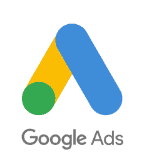Pay-per-click (PPC) advertising can be used in a variety of ways to increase your reach, engage specific audiences, and boost your bottom line. There are a lot of evergreen best practices out there; however, it is also important to keep up with shifting consumer behaviours and the changes being made to platforms such as Facebook, LinkedIn, and Google Ads.
HTML banner ads created by advertising agencies such as https://thebannermen.com/banners/animated-ads/html5/ can be equipped with a variety of interactive elements. To help you make the most of your PPC ad campaigns, here are some strategies to consider:
1. Enhance first-party data strategies with lead-gen ads
Running lead magnets can be an effective way to collect contact information that you can leverage within your direct marketing strategy. First-party data collection can be easily scaled using things such as lead form ads on Facebook, particularly as forms can be pre-populated with information that users have shared with Facebook. This significantly simplifies the process for users.
2. Refine B2B buyer personas with LinkedIn website demographics
If you run LinkedIn ads, it is worth diving into your data and segmenting the users by job function. This data can be compared to pixel data, which will allow you to measure your conversions. From here, you should find it easier to refine your offering to appeal to a wider audience and identify segments you can exclude from your LinkedIn audience.
3. Use Facebook campaign objectives
Facebook campaign objectives can be used to create conversational lead ads simply by ticking the ‘generate leads – messenger only’ box in the ‘message template’ section. This will ensure information is only collected from people who are interested in your business and allow the conversation to continue with qualified leads via Messenger.
By adopting a conversational approach, you may find it easier to engage people who are not receptive to more direct forms of advertising.





